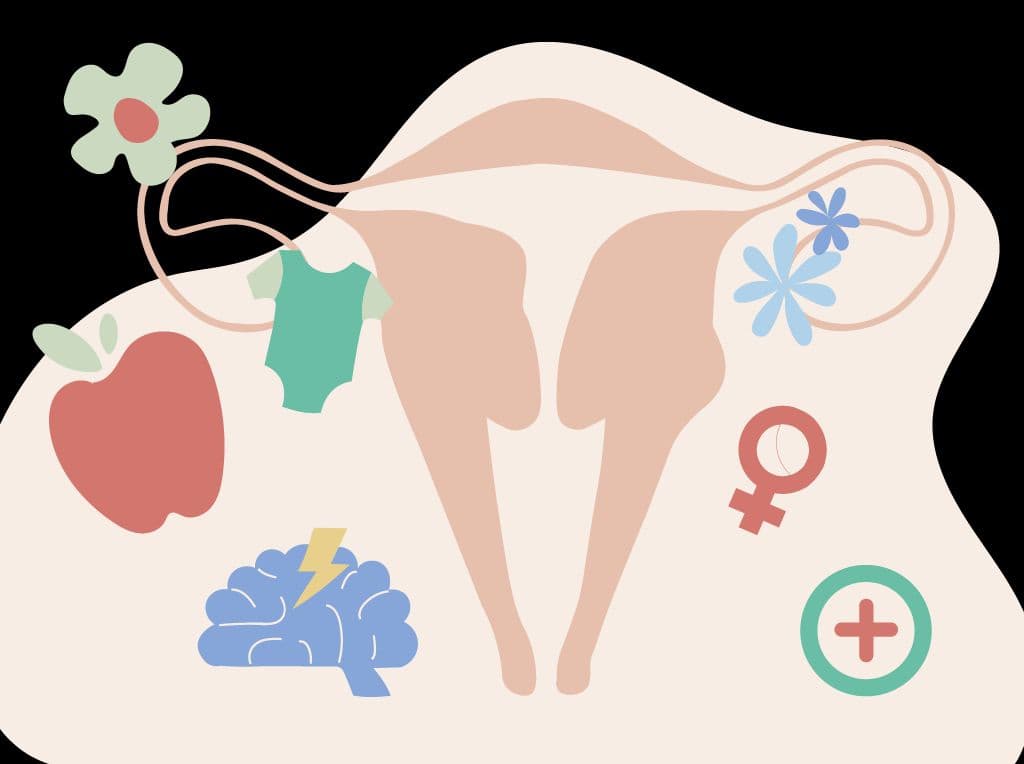This blog is compiled by Athira Krishnan, a content writer for Proactive For Her.
What is a c-section?
A c-section is the surgical delivery of the baby. It involves one incision in the mother’s abdomen and another in the uterus. This type of delivery is usually avoided before 39 weeks of pregnancy so that the baby has enough time to develop in the womb.
When and why is a c-section done?
C-section is done for the purpose of a safe delivery, both for the mother and the baby.
A c-section may be done either due to two reasons – foetal (concerning the baby) and maternal (concerning the mother).
Maternal reasons -
- Every mother has a normal duration of labour that differs depending on the stage of labour the mother is at. The first stage is normally 12-14 hours, the second stage is up to two hours and the final stage in fifteen minutes. If there is any delay in the first and second stage, your doctor might recommend a c-section to be done before you reach the third stage.
- Hypertension – High blood pressure during pregnancy
- Cervical dystocia – The presence of a firm cervix that might not open up normally in order to allow the baby to emerge.
- Abnormal contractions of the uterus – This makes pushing the baby through the birth canal hard.
- Relative size – If the size of the baby and the size of the birth canal are not in proportion, a c-section may be advised.
- Shape of pelvis – Some women may have a smaller pelvis and birth canal than normal thus making it hard for the baby to move through the birth canal.
- Abnormal position of the placenta – If the placenta is at the opening of the birth canal, it acts as an obstruction, preventing the baby to emerge.
- Abnormal vaginal bleeding during pregnancy may lead to your doctor advising you to undergo a planned c-section.
- Abnormal shape of the uterus – Some women are born with an irregularly shaped uterus to the point where it slightly complicates a vaginal birth.
- Birth of twins, triplets or more
- Presence of HIV or active herpes – If the baby is delivered vaginally, the secretions from the canal may enter the baby’s body and the disease may then be passed on to the baby.
- Premature separation of the placenta
Foetal reasons –
- Timing – Sometimes, your baby’s head might not descend into the birth canal at the right time and stays put in the pelvis.
- Position – Normally, the baby lies with its head next to the birth canal. In certain cases, the feet might lie near the birth canal or the baby might lie in a horizontal position. This makes a vaginal delivery complicated.
- Foetal distress – In this condition, the baby won’t be able to bear the stress of delivery.
- Abnormal weight – For an average Indian baby, the specified weight is up to 3.8 kgs. If the baby is above 4 kgs or below 1.5 kg, a c-section may be advised.
- Birth defects – In cases of some birth defects, a c-section is advised as a safer option.
- Position of umbilical cord – In some cases, the umbilical cord pushes through the birth canal before the baby’s head and causes the blood supply to the baby to get affected. In other cases, the cord may be wrapped around the baby’s neck due to constant movement. If 3-4 loops are present, a c-section may be recommended by your doctor.
What are the types of c-sections?
- Planned c-sections – The mother is first counselled prior to the surgery to provide emotional and mental support for her to mentally prepare herself and maintain a sense of comfort. Then, an empty stomach is advised to be maintained before the surgery and relaxing medications are also prescribed.
- Emergency c-sections – Emergency c-sections are resorted to when the mother experiences some difficulty during delivery.
How is the c-section carried out?
Prior to the surgery, you will be placed on an IV line to supply you with essential fluids since the intake of fluids is restricted for 6-8 hours post-surgery and is continued for 24 hours after surgery. A catheter is also inserted to allow you to urinate without movement which is removed 12-14 hours after the surgery.
First, a dose of anaesthesia is given in order to numb the areas from the abdomen and below. Then, a transverse incision is made in the lower abdomen, cutting through the muscle layers and the lower segment of the uterus. The baby is then gently removed from the uterus along with the placenta. Finally, all the layers are carefully stitched up.
What are the risks that may occur due to a c-section?
For the baby – When a baby is delivered naturally, it is squeezed through the birth canal and as a result, it expels excess fluid from the baby’s lungs. Since this doesn’t occur in the surgical method, there are rare cases where the baby has a slight difficulty in breathing.
For the mother – There might be a small risk of infection at the site of surgery, abnormal vaginal bleeding and formation of clots due to inactivity.
What constitutes after-care post-surgery?
- If the bandage is still on, make sure you don’t wet the area. Either waterproof the abdomen using a plastic bag/wrap or take a wet-sponge bath while being mindful of keeping the bandage dry
- Once the bandage is removed, the wound should be kept clean. Once washed, take care to dry the wound thoroughly.
- Provide enough support for your stomach. Since the muscles are lax, you might need the help of an abdomen brace/belt that will help support the belly. Post-pregnancy underwear is also available with an elasticized band that keeps the abdomen fully supported.
- Drink a lot of fluids and maintain a nutritional diet by eating them as small portions of frequent meals.
Physical activity post-surgery –
- After 6-8 hours post-surgery, you will be able to move, fold and stretch your legs. It is advised to do so to prevent the formation of clots.
- After 24 hours, you will be able to sit up and walk around in your room. This will help in easing your bowel movement, reduce bloating and prevent clotting in your veins.
- Light walking around the house can be done after 1-2 weeks.
- After 2-3 weeks, non-strenuous household work can be done.
- After 6 weeks, light exercises can be done. It is advised to not do any abdomen exercises or do any heavy weightlifting yet.
- It is recommended to wait for 6 months before resuming your entire workout/exercise routine.
Try and keep an eye out for the following signs. If you observe any of them, do consult your doctor as soon as possible.
- Keep an eye out for any signs of infection like redness, swelling, presence of discharge, fever or increased pain.
- Vaginal bleeding may occur for 3-5 days post-surgery. If it persists beyond that, a doctor’s care may be required.
Once vaginal bleeding stops, after 7-10 days, white discharge may occur. If it is foul-smelling, it may suggest infection.
- Swelling, redness or pain in the feet or calves
What about future pregnancies?
It is recommended to undergo a c-section for your future deliveries as a vaginal delivery risk the uterus undergoing tremendous strain and possible tearing once contractions start. If this happens, it may pose risks to both your child and you.
There are special cases where a vaginal delivery for the second pregnancy. This must be done with very close monitoring of both the child and the mother. It still poses some risks and therefore, a c-section is preferred for future pregnancies.
In conclusion: C-sections are a common procedure with women recovering fully in just a few weeks. It is always advisable to follow up with your doctor through regular check-ups. This will highlight the need for a c-section, if necessary. And if so, a planned c-section can be done so you can be both mentally and physically prepared before the surgery. Taking small measures post-surgery will keep you on track for a speedy recovery.
Disclaimer: This information is provided for educational purposes and should not be construed as medical advice. Please consult with your healthcare practitioners before undertaking any changes in your diet or adding supplements.
Proactive is a digital clinic for women, offering accessible, personalized, and confidential healthcare solutions. We offer products and services for out-patient health concerns of Indian women, across their lifetime - from puberty to pregnancy to menopause. To know more on the sexual and reproductive health of women, visit https://www.proactiveforher.com/

